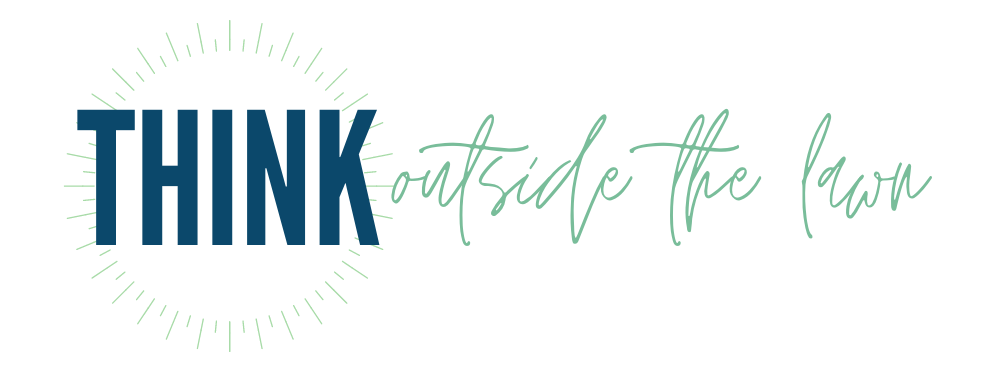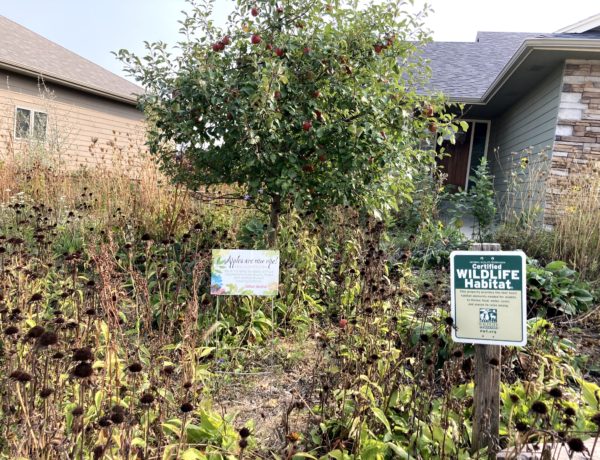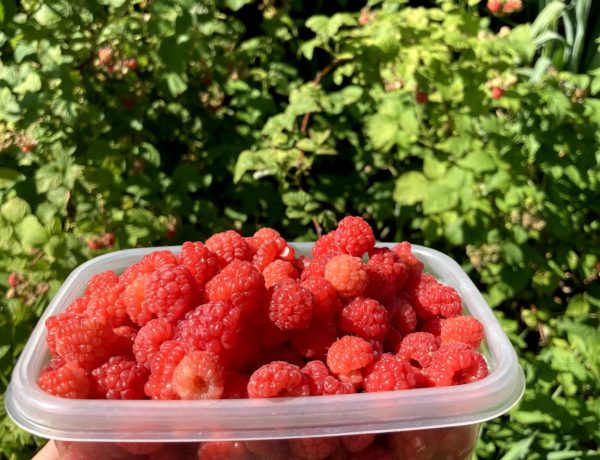When we bought our house the landscaping was pristine. The lawn had been regularly watered and sprayed. It was a lush carpet of green in September. The rock garden landscaping was dutifully sprayed with roundup and planted sparsely with landscaping plants. It was just the way people like it around here.
But we did not spray any chemicals. We did not water the lawn. Soon enough that beautiful monster dandelion began popping up all over the yard, adding color and interest to the mono-green and creating food for us and the birds (finches eat the seeds).
For years I was petrified that my neighbors would rally against us. Torches in hand, they would form an HOA or otherwise burn down my freedom to grow plants in my lawn other than grass. But instead of succumbing to the fear of rejection and spraying the weeds, I made dandelion jelly. Then I walked around to neighbors’ houses and gave a jar to anyone who would take it.
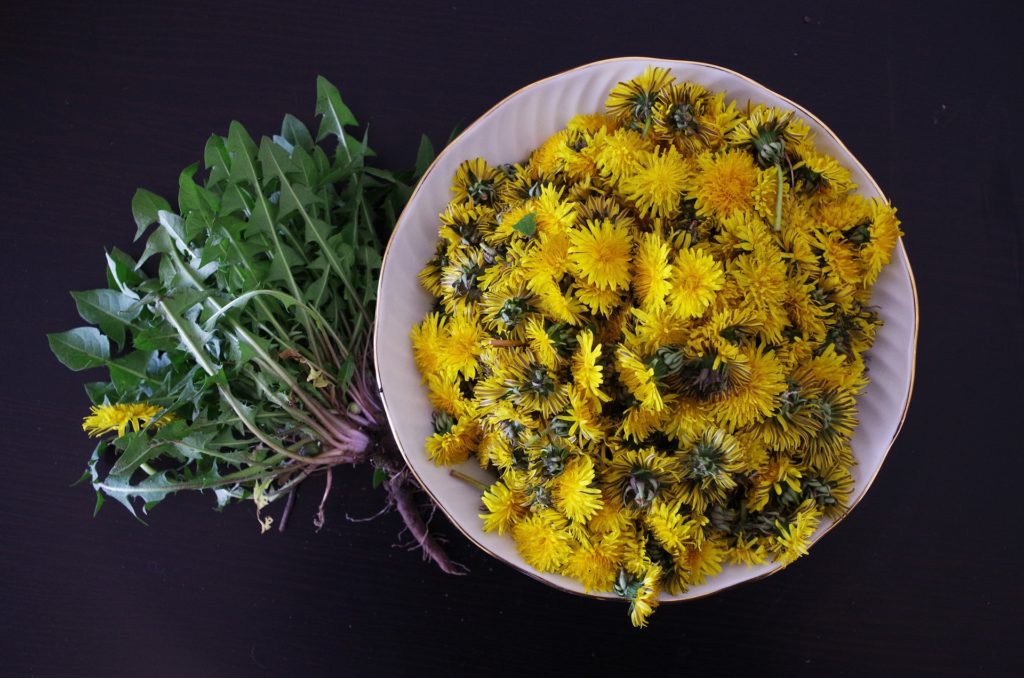
Fear evolved into love
We have since removed as much as the rock landscaping as this body can handle and replaced it with low-maintenance edible landscaping. Our yard is indeed quite different than any other in the neighborhood. And in the front yard, there are signs that instruct neighbors to help themselves. When they walk by and pause at the garden, I tell them what some of the plants are and that they can always harvest from the garden. When the apples are ripe, I place a sign (made by a neighbor at his sign printshop for free) in front of the tree inviting neighbors to gently harvest some.
Neighbors love our yard. Even though it’s different; even though we have “weeds.” All year-long, the gardens morph and change with the seasons. Colors evolve from pinks and purples to reds and magentas to whites and pinks to yellows throughout the growing season. Plants spread and die and reseed into different areas and the garden has different shapes and character from year to year. Neighbors who regularly walk by enjoy observing this, and sometimes they ask me questions, like which plant should they plant for monarchs, or what is that plant with the beautiful magenta flowers?
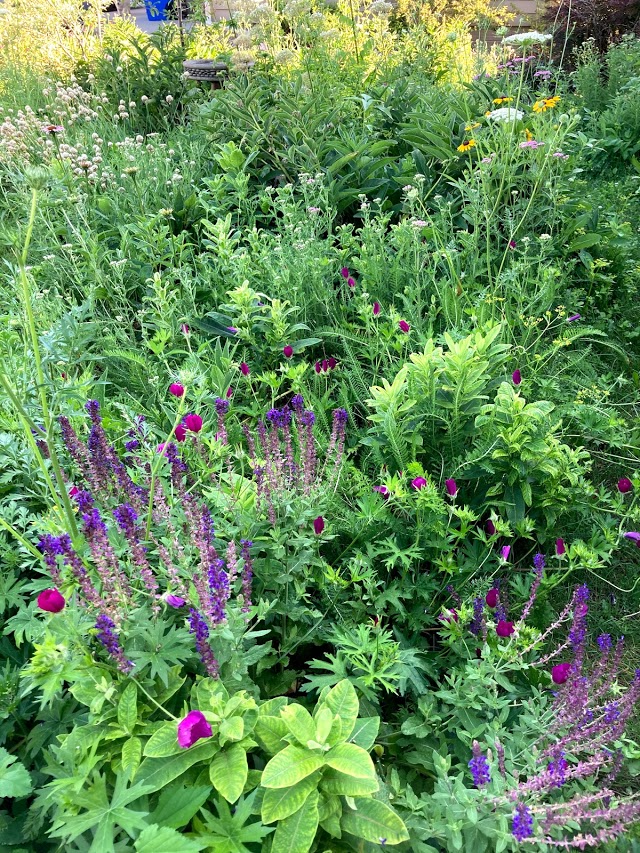
In 2016 I founded a nonprofit that was based on this concept of sharing bounty. Project Food Forest plants public food forests that share their bounty with everyone. We help people plant low-maintenance edible landscaping on their properties and encourage them to share as well. And along that journey, I became friends with other wonderful local people who also work to share their bounty and encourage others to do the same, like Glean for Good.
Why share your bounty
So why do all this sharing? In my own yard, I started sharing partly out of fear. But it felt so good, even if some of the neighbors cringed and rejected my yellow monster weed juice. I also hate all things cooking. I hate being in the kitchen period. So the more I share, the less processing I do in the kitchen. But mostly, I like being a good person. I believe resolutely in the power of karma. I know without doubt that the more good I do, the more good that comes to my family.
We all know that we have a major imbalance with hunger and food waste. When food is opened up to the public before it even comes off the branch, multiple steps and middle-men are cut from the equation. Food is less likely to rot before a consumer reaches it. And if a consumer does not reach it, it simply decomposes back into its own system, adding nutrients to create more abundance in following years rather than being sent to a landfill.
It also empowers people to feed themselves rather than be fed. They have a sense of obligation and they are working for their food, which helps them feel more powerful as individuals. This can cut into the cycle of give-take. Most people who receive food from food banks and kitchens don’t want to always take and never give, but they have no other choice. Amazing things happen when people who feel powerless, suddenly feel empowered.
Sharing your bounty encourages others to possibly add some food to their own yards, increasing the amount of food grown and decreasing the amount of unused lawn and the resources used on them. People see or harvest from a fruit tree growing on their neighbor’s yard and realize they want one too. Afterall, you can’t buy a harelred apple or a pawpaw at the grocery store.
How to start sharing your bounty
Harvest yourself and give away extras
There are many different ways to share your bounty! Many people share their garden produce and fruit tree harvests with their friends and neighbors.They bring boxes of extra zucchini to work or a tub of garden goodies to their church. Some gardeners grow enough extra food to harvest and donate to their local food pantries.
Open your property to neighbors
You can also choose to open up part of your property, like the front yard garden, for neighbors to harvest. I know many people don’t feel comfortable with this option, and I totally understand! This option is also usually only beneficial if you have low-maintenance edible landscaping, because you don’t put much work into it. If I were to grow labor-intensive annual vegetables in my front yard, it would be a different story. I would be happy to share extra, but only after I got enough of the produce that I worked so hard for.
If you grow fruit tree guilds that are full of edible and medicinal perennials and self-seeding annuals, though, most of it often goes unharvested (chop-and-drop mulch!). And harvested plants often grow right on back. For example, garden sorrel just keeps giving from early spring to late fall. Same with chives, garlic chives, mallow, and dandelions to name a few.
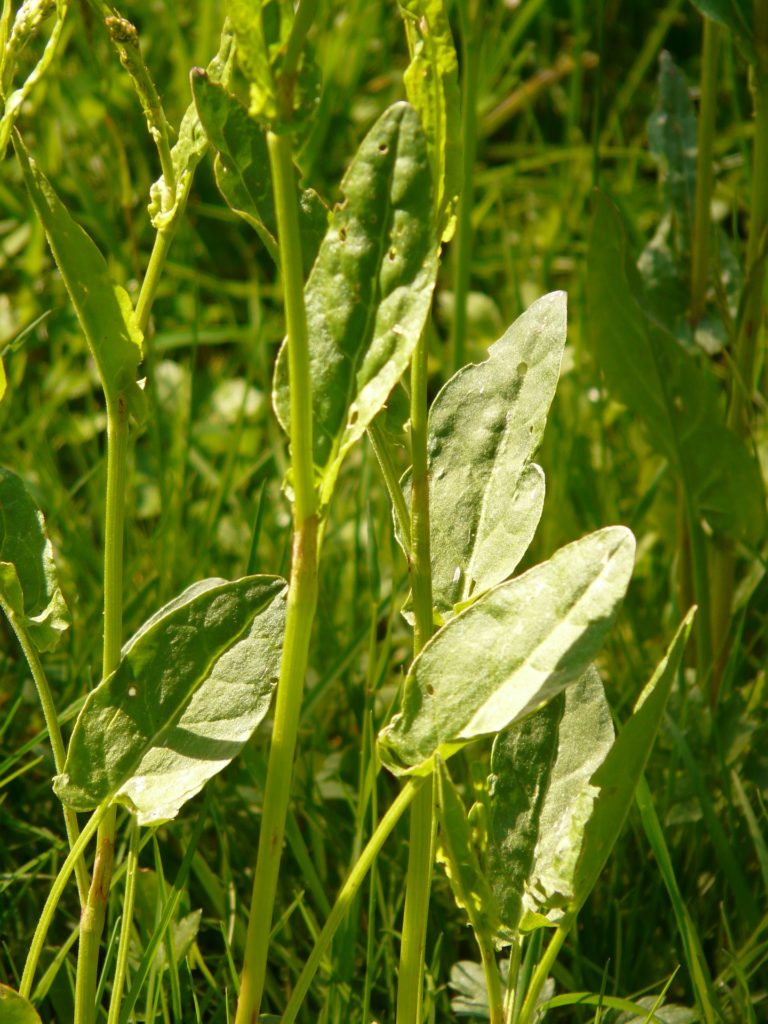
Add signs so your neighbors know it’s okay to harvest. One main sign works, but I would very much like to add more signs to our front gardens — particularly informational plant signs. Many of the edible plants I grow and offer to share are not common plants, and people don’t know what they are, whether they should harvest them, or how to eat them. But for now, I like talking to passersby and introducing them personally to the gardens and plants. It’s good to connect with humans. Whatever you choose to do, make sure you communicate it somehow.
Sell your bounty
You can even sell your bounty! Rent a stall at the local farmers market or contact your local food cooperative. You are still sharing, even if you are making an income. The income allows you to continue growing your food, or even to grow more, in a sustainable (able to continue for a long time) fashion. Many local farmers and for-profit growers share their extras with local food nonprofits. For example, a local church-run program gathers all the produce that wasn’t sold at the farmers market and delivers it to the local food kitchens and pantries. I cannot emphasize this statement enough: making an income from a good deed does not make it any less of a good deed. It just makes it more sustainable as a long-term effort.
Do you share your bounty? Do you have amazing programs in your area to facilitate sharing and gleaning? I’d love to hear about them!
